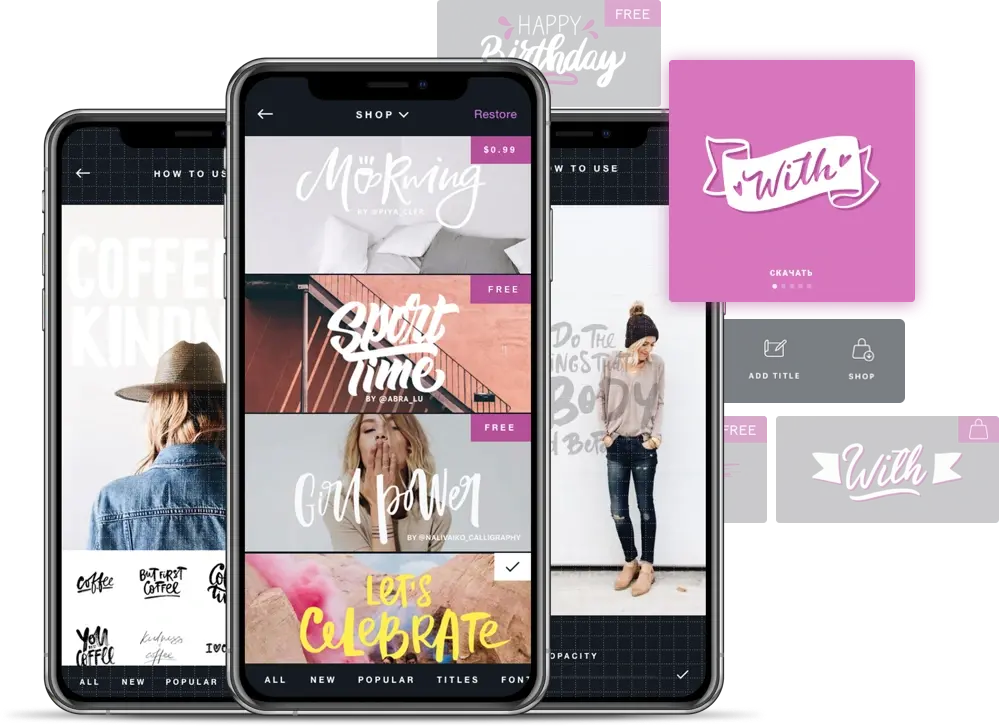Nothing beats good music. The world is being transformed with innovation, and technology has also changed music apps. Many users are switching to streaming music apps from local music libraries. Nowadays, you can see many music-related applications in the digital world. These apps are engaging customers with many new features.
Many different applications are hitting the market and showing the way for new entrepreneurs to enter the market for streaming music applications.
The evolving music streaming services and digital space are the future of the music business. In this article, you will learn more about audio streaming apps, music app developers and how to make a music streaming website.
What Is an Audio Streaming App?
Music streaming is the process of listening to music online by continuously receiving small chunks of a music file and playing them back. In other words, it's just listening to music as it downloads to your device in real-time. Downloading here should not be understood as downloading as a file, since these are different things, but technically, if a file can be listened to by streaming, then it can be downloaded using special software.
The tracks being played do not take up the memory on the device, allowing you to enjoy millions of songs from the cloud. The only caveat is that using any such service requires Wi-Fi or mobile internet. You can also download individual songs and entire albums to listen to them offline without connection.
Discover how to build an AI-powered entertainment app
The Evolution of the Music Streaming Market
The global music streaming audience has seen significant growth, reaching 524 million users in 2021, an increase of 26.4% from the previous year. Users now spend an average of 18.4 hours per week on music streaming services, a figure that rivals time spent on social media platforms.
Valued at $13 billion in 2019, the online music streaming market is projected to expand to $24 billion by 2027. Notably, music streaming currently generates 84% of the revenue for the U.S. music industry. This burgeoning growth underscores the ripe opportunity for those looking to build music streaming app, tapping into the thriving digital music landscape and exploring how to create a music app that stands out in this competitive market.
How to Create a Music Streaming App
The era of music carriers, and possibly music albums, is a thing of the past. It was replaced by music as a stream. To create a music app, you will need to do the following:
1. Decide on the audience and type of application
Your new music streaming service needs to compete with Google Play Music, Apple Music, Soundcloud, Spotify, and other platforms. It is difficult, risky, and expensive. Therefore, when you create your project, it is better to target a specific audience. Aim to stand out from the competitors due to a more complete playlist in the chosen area, as well as more personalized marketing and design.
Alternatively, you can simply choose a musical direction: rock, classNameical, folk, rap, music from a certain decade, and more. You can also choose to work only with artists from a specific region or country. You can create a Spotify clone with tracks from new artists or bands only.
Beyond that, ask yourself: are you making a simple streaming app or a streaming app that has several engaging features?
2. Choose streaming or engagement before you create a music app
A streaming app is a subtype of an engagement app Both types of applications give the listener access to streaming content. But the engaging application makes this process interactive, trying to maximize the user's interest.
Engaging content includes:
- Ratings;
- Integration of messages;
- Notifications and more.
AppForType Mobile App

3. Start working with music app developers
After you have decided on the audience and type of application, you can contact the audio streaming app development company of your choice. It can help you create a music streaming website that your future audience will love.
Engaging content According to our specialists, the creation of a mobile or web application in such companies takes place in several stages:
- The customer tells the company's specialists what they want to get at the output and how they see the mobile application.
- The business analysts conduct a discovery phase: they gather requirements, analyze the market, to come up with the best cost-effective strategy for the project.
- When the requirements to the future app are ready, we are able to draw up a detailed technical task.
- Then the team proceeds directly to the design. You’ll need experienced UI/UX designers for this state. Next, a prototype is created and the application interface is designed. Each stage is coordinated and approved by the customer.
- Now we move on to developing an application. The same app can be developed for iOS and Android platforms separately, or you can get a cross-platform solution.
At Requestum, we create technology solutions and user interfaces for a variety of industries with the functionality you need.
4. Provide the best possible playback quality
The best codec for streaming audio is the AAC format. While the MP3 format is better suited for computers, AAC provides good stream quality even at 64 kbps. And this codec is suitable for Android and iOS platforms.
Read more: How to Start a Streaming Service
5. Don't forget about registration
It's true, sometimes you don't have to register in the app to listen to music. But this option will help the user to create their playlists and get personalized music recommendations.
6. Write descriptions as detailed as possible
The task of the developers is to make sure that the user gets all the information by looking at the screen. You can even add lyrics like Apple Music.
7. Develop social activity
You can add a "Like" button next to the song title, and thereby help not only users, but yourself as well. This way people can rate tracks or instantly share their opinions. Based on their likes, you can suggest music they like.
8. Add notifications
When you start creating a music streaming project, remember to communicate with your users. Knowing your audience's musical tastes will help you interact with them. Most users always want to know everything about their favorite artists. Therefore, along with the music, you could also share some information with them. This will make your app more useful and memorable.
9. Get a license
You will most likely need to obtain a license to work in the content streaming niche. In the future, this will affect the cost of the product.
Features to Consider in Music Streaming App Development
To build a music streaming app that stands out in the competitive market, it's crucial to offer a digital product that surpasses existing ones by a significant margin. The key to captivating your audience lies not just in the music but in the features your app offers, which can significantly enhance user experience.
Let’s create powerful, custom software for your business
Thoughtfully selected features facilitate easier navigation, enabling users to explore and enjoy a wider range of content effortlessly. Thus, choosing the right features for your app is a critical step in winning over the ears and hearts of your listeners.
When considering how to make a music app, here are essential features to include:
-
Registration: Simplify the signup and login process with one-tap registration options through Gmail and Facebook, allowing users to quickly access your app using their existing social media or email accounts.
-
Quick search: An indispensable feature for any music app, a quick search function enables users to effortlessly find the songs, artists, or albums they're searching for.
-
Music player: The heart of your music streaming app, a robust music player supporting audio-only playback, ensures users can enjoy music in the background while multitasking on their device.
-
Playlist creation: Acknowledge the diverse musical tastes of your audience by enabling them to curate personal playlists. Platforms excel by offering users the flexibility to create artist, albums, and custom playlists, fostering personal connections and shared experiences among users.
-
Offline playback: While not mandatory, offering the option to download music for offline listening adds significant value to your app, catering to users in areas with limited internet connectivity.
-
In-app purchases: Essential for monetization, this feature allows you to offer monthly subscriptions or other in-app purchases, providing a steady revenue stream while enhancing user engagement.
-
Personalized recommendations: Elevate the user experience by suggesting music and podcasts based on listeners' geographic locations and musical preferences.
-
Regional content priority: For apps targeting multiple regions and languages, prioritize loading regional content to cater to local tastes and preferences, ensuring a personalized and relevant user experience.
How Streaming Services Are Changing The Music Market
Along with the increasing popularity of streaming services, people have stopped listening to the radio as often as they used to. Broadcasters themselves are talking about the changes. For example, last year the BBC found that young people aged 15 to 34 spend more time streaming music than all BBC radio stations.
Various large international corporations are researching music subscription services as one of the most affordable channels for broadcasting songs to an audience of listeners. They all share the same idea: the digital space is the future of the music business.
Conclusion
In streaming services, listeners are offered to listen to both new and old releases, thereby prolonging the life of the latter. We don't know what will happen to the music market in ten or twenty years, but this trend of audio streaming apps has become convenient for listeners and profitable for artists, app owners, and developers.
If you have any questions about the development of technological solutions for an audio streaming app, be it design or something else, you can always contact our company. We will be happy to help!

Our team is dedicated to delivering high-quality services and achieving results that exceed clients' expectations. Let’s discuss how we can help your business succeed.


SHARE: